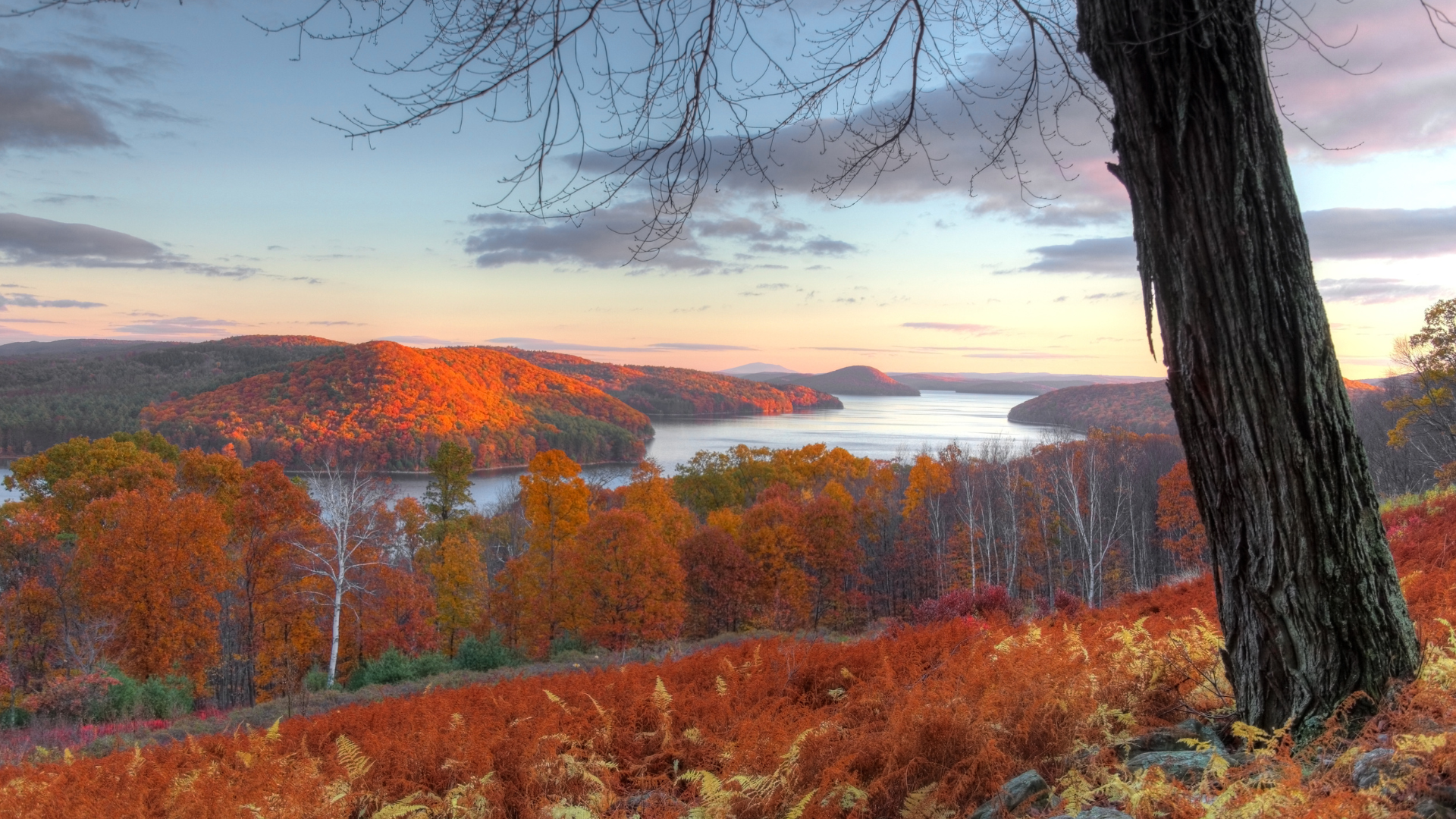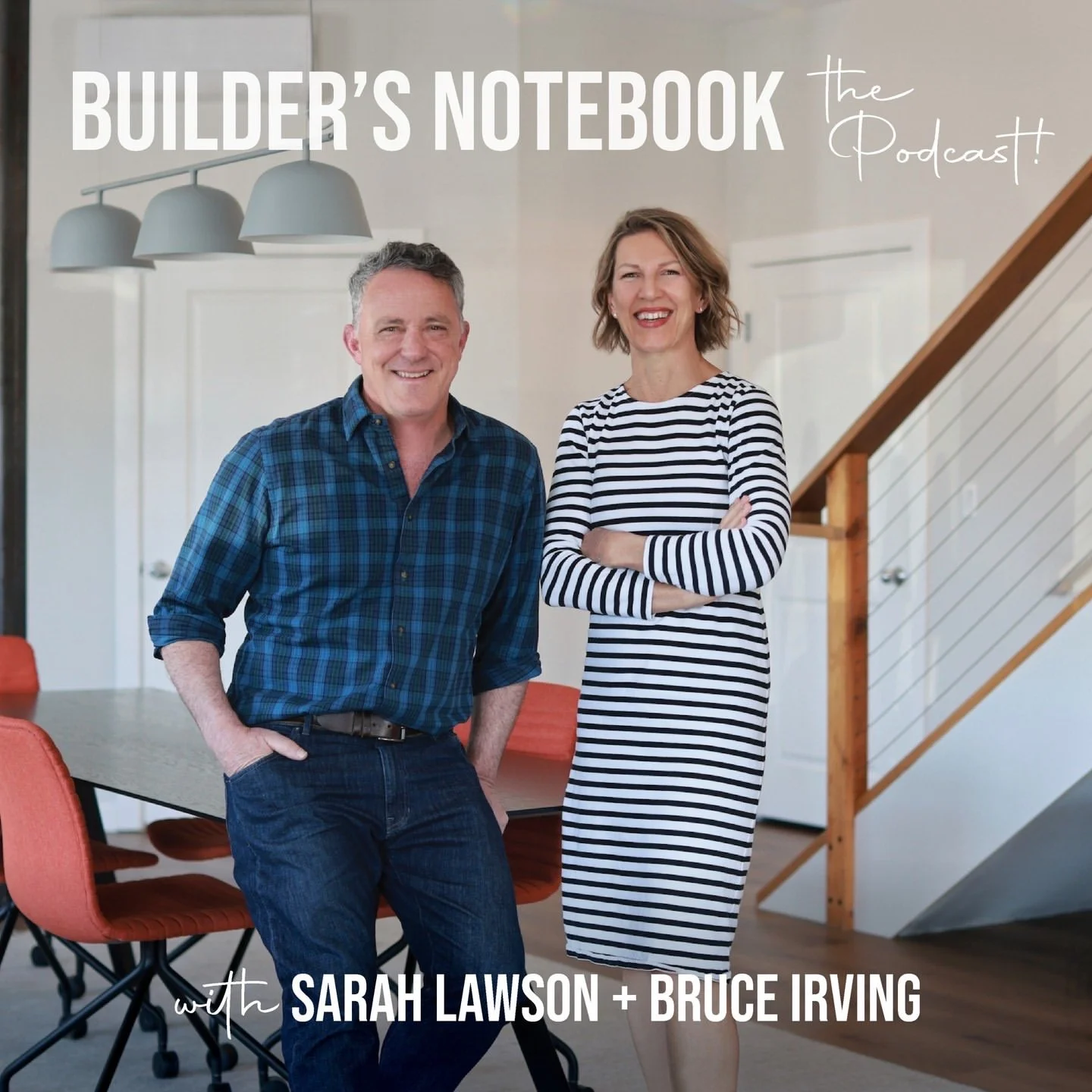Builder’s Notebook Podcast
The Podcast shares practical advice to help listeners make informed and intelligent decisions about renovating or building a home. Hosted by Sarah Lawson and Bruce Irving, this informative, nuts and bolts series on home design, construction, and renovation will welcome industry experts and touch on a variety of topics.
Writings
-

New England Icons
We tend to think of icons as simple, graphic, stone or wooden objects without much depth or life, left overs from bygone eras. But Bruce Irving, former producer of the popular PBS show This Old House, will have none of that. In a collection of short essays, Irving taps into our collective consciousness by extolling the comforting sense of place we associate with such common and not-so-common New England sights as stone walls, village greens, lobster boats, classic ski runs, and garden cemeteries, to name but a few—symbols of enduring importance that are also still full of life and character.
-

Killer color - Knock ‘em dead with a cool new coat for your house this fall
Painting the outside of your home is like dressing for dinner at your prospective mother-in-law’s house: You want to leave a good impression and avoid any embarrassing stares. Below are seven dos and don’ts to help you put your home’s best face forward.On the next page, see our Smart Picks so you can choose the right paint to avoid problems like fast fading and mildew.
-

Bauhaus in the ’Burbs - Modernism met socialism as forward-thinking architects built neighborhoods based on egalitarian principles
Deep in the rock-ribbed yankee heartland of Eastern Massachusetts sit little pockets of — gasp! — socialism (and we’re not talking about Cambridge). Planned communities with a deeper founding mission than, say, Long Island’s Levittown, these are New England neighborhoods with DNA tracing back not to Anglo-Saxon lands, but to Germany. Startling when they were first built, they live on today — and in good health — though much of the region seems to have caught up with many of their once-radical principles.
-

Let’s Renovate, Said the Colonists
Capes contend, but for “house that says New England,” the winner has to be the saltbox: hunkered down survivors, sloped backs to the north wind, redolent of woodsmoke and traditional colonial American values. And indeed, this type of house is specific to coastal New England, where the transition from “what we had in England” to “what we need over here” took place not too long after the first American houses went up.
-

Making the Most of Your Team
We’re used to breaking work into a series of steps. First we scrape, then we prime, then we paint. Lather, rinse, repeat. Wipe on, wipe off. But when it comes to the complex task of home renovation, I recommend that homeowners consider a less linear approach from the start. Traditionally, an architect or designer is hired, a plan finalized and put out to bid, a contractor chosen. Later, a lighting specialist, an interior designer, or a landscape person might come on board. Call it the choo-choo train method, one player brought in at a time, perhaps in an effort to keep the payroll under control, perhaps out of a mistaken belief that you can cross that bridge when you get there.
-

New England Icon: White Pine
Tall, White, and Handsome
Late fall in New England is a revelation, literally. When the maples and oaks and other deciduous trees have put on their famously colorful display and then dropped all their leaves, the conifers are revealed.
Mt. Greylock
-

Greylock, Most Excellent Majesty
Massachusetts has much to boast about. Boston was the cradle of the American Revolution, Cambridge has the country’s most-opinionated zip code, basketball was invented in Springfield and Marshmallow Fluff in Somerville.
-

Scenic Drives of New England
In the beginning, there were trails, and lots of them. New England was no “trackless wilderness” when the Europeans arrived—it was crisscrossed with paths laid out along riverways, up and down valleys, and through mountain gaps, used by the region’s original occupants for seasonal moves following food and for trading between tribes.
-

Apples of Our Eye
What could be more American than apple pie? Well, maybe crab apple pie, since those sour wild apples were the only kind growing here when the Pilgrims showed up in 1620. The sweet, domesticated version, Malus domestica, was but halfway through its march around the world then, having started in the prehistoric forests of central Asia, thence along human trade routes westward till finally making it to the British Isles, thanks to the Romans.
-

A Pile of Warmth and Affection
The ever-quotable Henry David Thoreau wrote, “Every man looks at his wood-pile with a kind of affection.” Living out at Walden Pond, he spent plenty of time with wood. “I deal so much with my fuel, — what with finding it, loading it, conveying it home, sawing and splitting it, — get so many values out of it, am warmed in so many ways by it, that the heat it will yield when in the stove is of a lower temperature and a lesser value in my eyes, — though when I feel it I am reminded of all my adventures.”
-

A Hut-Warming Experience
Winning the Cold War
Everyone loves New England’s natural beauty, but sometimes enough is enough—the wind is howling, the snow is driving, and all we want to be is somewhere warm. But hearty natives don’t decamp for Florida; they just find themselves a nice little hut.
-

Rock Solid
This month's article about granite is being published while I am in the Faroe Islands, one of the most rockbound places I've ever been. It's raw here, newer, and it makes me look forward to seeing the softened contours of New England again.
-

Sweet and Simple
Warm days and cold nights--it's maple-sugaring time again in New England, and the time-honored structures where the magic happens are worth a loving look.
-

New England's First Big Dig
99 springs ago, Cape Cod became an island with the opening of the Cape Cod Canal. It was a long time coming.
-

In Praise of Lobster Boats
Spring is here and Maine lobsters are migrating inshore from the deep! Lobsterers are stacking their decks with traps and heading out for the summer harvest--here's a piece about their rides.
-

O Acadia!
The Downeast destination is one of the finest (and most popular) in the national park system. Reservations are required, but a visit is oh-so worth it.
-

Scenic as Hell
(That's a saying of my wonderful late aunt-in-law Alice Mary Pierce, who knew a good-looking view when she saw one.)
It's summer in New England and there's a whole lotta road tripping going on. Here's a highly subjective rundown of the region's best scenic routes and how they got here.
-

Liquid Asset
With clean water being called "the oil of the 21st century" and dire warnings about America's own supply, it's worth celebrating the amazing Quabbin Reservoir, source for Boston and 48 other communities.
-

A Drink to Fall!
Fall is cider season in New England, and B.F. Clyde's mill in Mystic, Connecticut, makes the perfect road trip. It's the only steam-powered cider press in the country, squeezing away since 1898.
-

High on the Bog
Cranberries are the quintessential New England fruit, and fall is when the harvest floats into view.
-

Snow Days
New England ski areas are opening up this month. There are a lot of them, but there used to be more.
-

Dangerous Drives
In the 19th century, winters were when crews worked the north woods to prepare for epic log drives. Think you have a hard job? Think again.
-
A Post-Glacial World
Everywhere you look, New England’s landscape shows what it went through when a mile-thick sheet of ice came down from the north.
-

Sweet Dreams Are Made of This
A friend of mine just had her appendix removed, which made me think of this story. On October 16, 1846, Mass. General Hospital’s Ether Dome became the birthplace of modern anesthesia. Getting surgery got a whole lot better on that day.
-

Going Up the Country
Who hasn’t dreamed of chucking it all and moving to the country? Yankee Magazine’s “House for Sale” column has been stoking such dreams for more than seven decades.
Quoted
-

25 of the Biggest Design Mistakes New Homeowners Make
You put on your big girl pants, met with your financial adviser, got a mortgage, and bought a house. Hooray! Now comes the hard part: making it your own. Whether you’re in for a gut renovation or just trying to redecorate, there’s a lot more to designing a property than you might think. We talked to two experts—a renovation consultant and an interior designer—to learn about the most common blunders that new homeowners make, so that you won’t follow in their footsteps.
-

4 Signs You Should Sell Your House and Build a New One
Sometimes, the scope of a client’s dreams outstrip the return they’ll see on the home—or the joy they’ll ever find there. “For me, it’s a red flag when a homeowner starts talking about moving the stairs,” says Victoria Sass, who founded her Minneapolis-area design firm Project Refuge Studio with a focus on renovations that keep young families in old homes. “There's a lot of engineering that comes into play, and it's not usually the best bang for your buck. That’s when I take the conversation to a more abstract level and say, ‘What is it you really want out of a house?’ It's probably going to be cheaper to move and get the house that you actually want, or at least start closer to where you want to end up.”
-

Single-Hung vs. Double-Hung Windows: Which Style Is Best for Your Home?
Some window types go hand-in-hand with certain architectural styles—Victorian houses have stained glass windows, for example, while Craftsman and Colonial homes often feature dormer windows. But no matter what type of home you own, single-hung and double-hung windows blend in seamlessly with every style.
Thanks to their classic, timeless look, single-hung and double-hung windows (also known as single-sash and double-sash windows) are two of the most popular window styles in the country. In fact, when you think of a standard window—a tall, vertical window that opens upwards—you're likely envisioning a single-hung or double-hung window.
-

How to Pick the Perfect Color Palette for a Mid-Century Modern House, According to a Real Estate Agent
According to Bruce Irving, a home renovation consultant and real estate agent based in Cambridge, Massachusetts, a true mid-century modern color palette comprises earth tones like ochre, muted yellow, tan, and brown, energized by punchy accent colors like aqua, acid green, and bright red.
“Mid-century modern architects were extremely attuned to the natural world. They wanted to make sure that these homes were highly connected to the spot on the earth that they occupied,” he says. “So, lots of glass, lots of stone, lots of wood. And my understanding is that they wanted that connection to continue on into the walls.”
-

7 Home-Improvement Projects You Shouldn’t Put Off Any Longer
“Think of it like going to the gym,” says Bruce Irving, a home-renovation consultant and real estate agent based in Cambridge, Massachusetts. “It’s about looking good, but it’s also about enabling your body to do some jumping quickly, should it need to.” That is: No one wants to be caught wishing they’d made a specific improvement already.





